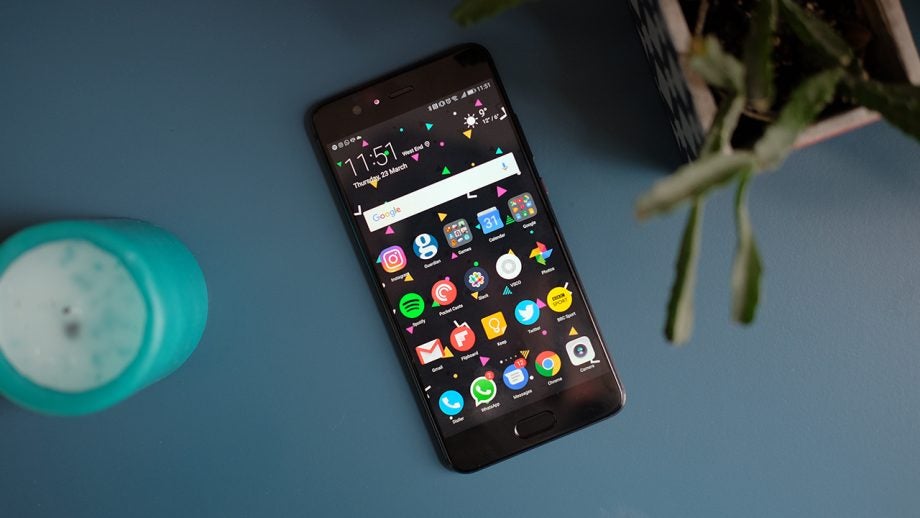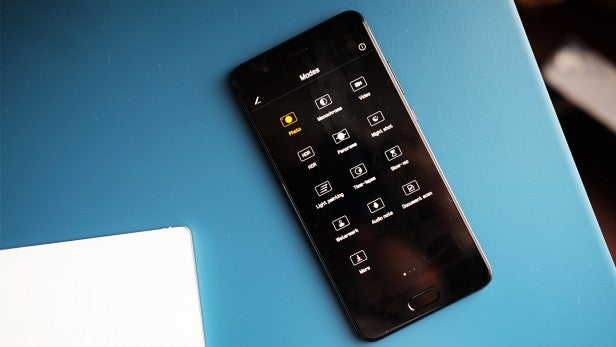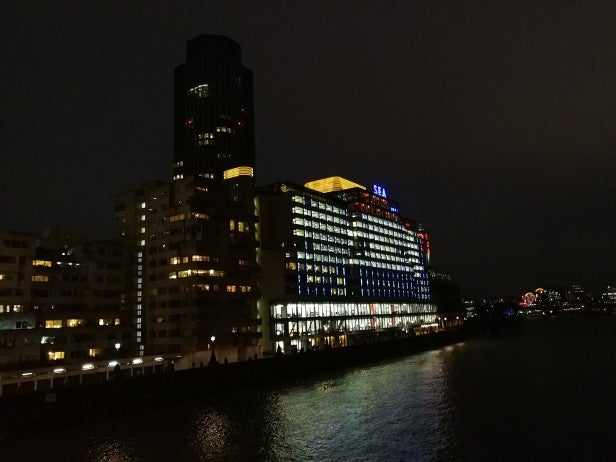Huawei P10 Plus Review - Camera Review
Camera
The better P10

Sections
- Page 1 Huawei P10 Plus Review
- Page 2 Performance and software Review
- Page 3 Camera Review
- Page 4 Battery life and verdict Review
Huawei P10 Plus – Camera
Huawei’s cameras appear to divide opinion more than any other. If you judge a camera’s ability on benchmarks such as DxO Mark, then you’ll probably believe the smaller P10 is among the best. In our review, however, we found it disappointing in low light and not good enough to compete with the Pixel and iPhone 7. Benchmarks will only tell you so much; more important is how the camera performs in real-life situations.

I wasn’t particularly impressed with the P10’s camera, but the optics in the P10 Plus are far superior, making it a much better snapper than its smaller sibling.
The basics remain the same in both cameras. Each has a dual-camera layout, with a 20-megapixel monochrome sensor and a 12-megapixel RGB version with optical image stabilisation. Having a higher megapixel monochrome sensor allows the capture of far more detail and greater light, without sacrificing speed and efficiency of the colour sensor.
The big difference between the P10 and P10 Plus is the lens that sits on the sensor. While both are co-engineered with Leica, the P10 Plus has a wider f/1.7 aperture that lets in far greater light than the narrow f/2.2 lens on the regular P10. More light means brighter shots; you should always look for a wider aperture if you take lots of night-time shots.
Low-light shots from the P10 Plus are excellent, with dark spots not overly noisy and colour still visible. I’m impressed with the sheer amount of detail in the shots; the camera here manages to compete with both the iPhone 7 and Google Pixel.
 Low-light shots look great, with deep black sky and bright lights accurately picked out
Low-light shots look great, with deep black sky and bright lights accurately picked out

Even in the dark, the camera can pick out bright colours and expose the shot well
Well-lit daylight shots are superb too, and here the wider aperture results in more natural background blur when taking portraits, meaning you won’t need to use the odd-looking ‘Portrait’ mode as much. Skin tones are captured nicely, but on occasion colours can look a little subdued and a little on the cool side. It’s nothing that a touch of editing won’t easily sort out, though.

There’s plenty of detail and well defined colours; use the ‘Pro’ mode to bump up the colour saturation

Detail isn’t lost in poor light

The wide aperture gives a lovely natural bokeh effect, without software enhancements

Photos have great depth to them
Portraits and landscapes are the cameras two biggest strengths, but the results are best with all the extra modes are turned off. The HDR mode isn’t automatic and, as such, leaving it on all the time can result in some weird effects in some shots. The Night Shot mode, too, seems to crank up the noise, blowing out exposure and leaving disappointing results.
These extra tweaks might be needed with less than impressive optics, but the strong sensors and lens at play here make them redundant.
One mode that can improve your shots, however, is the Pro mode. This is easily accessed with a swipe up, and it lets you alter the ISO, white balance, focus and shutter speed. It will also save shots in the uncompressed RAW format. It’s a little fiddly, but work with it and you’ll see the results.
Personally, I love the monochrome shots taken with the dedicated black-and-white sensor. The 20-megapixel results are sharp and nearly always have that professional touch about them. Simply layering a lack-and-white effect over a colour photo doesn’t leave you with quite the same results.

The monochrome sensor takes excellent pictures
Having two cameras of differing resolutions also allows the P10 Plus to take advantage of some clever zooming features. While it’s no replacement for a different focal length, as is the case with the iPhone 7 Plus, it does give better results than your typical phone zoom. You can zoom to 2x before the app will advise against going further, and the transition is smooth.

(above: normal; below: zoomed 2x)

You do lose a bit of quality – it basically zooms into a 20-megapixel picture and caps it at 12 megapixels – but I’d happily take the hit to get a little closer to a subject in certain situations.
The front-facing 8-megapixel f/1.9 camera is impressive too. Huawei has reduced its reliance on garish beauty modes and it will now automatically switch to a ‘wide selfie’ if it detects multiple faces in the shot. You’ll still get some odd results if you turn on the Portrait mode, but as with the main camera, the best results are achieved with the extra options turned off.
Video tops out at 4K at 30fps and looks good; smooth and detailed, although I’d stick with 1080p at 60fps for even smoother footage.
How we test phones
We test every mobile phone we review thoroughly. We use industry standard tests to compare features properly and we use the phone as our main device over the review period. We’ll always tell you what we find and we never, ever, accept money to review a product.


